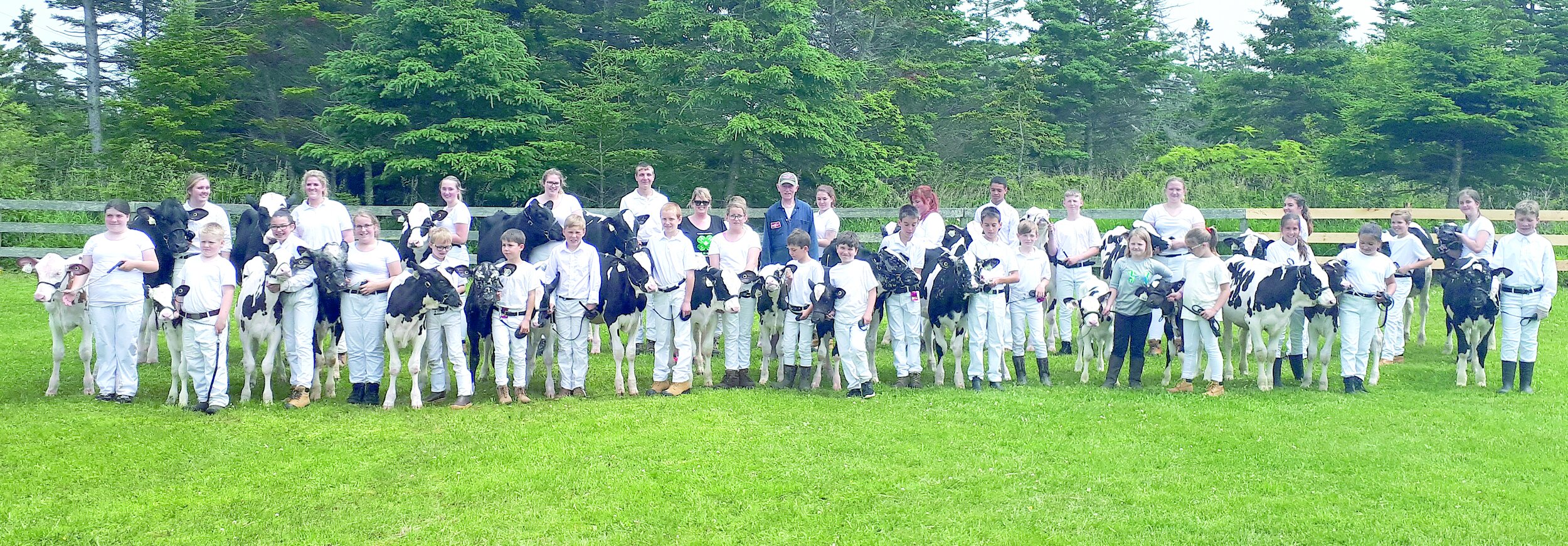Last 4-H club in Yarmouth County thriving
/by Wyatt Pitman
The Prince Charles 4-H Club is a rich part of 4-H history that has persevered in keeping the 4-H movement alive in Nova Scotia’s Yarmouth County. It began in 1950 in the Chegoggin area and was named after the young Prince Charles.
Harold Wilson was the agricultural representative who began the club and Jack Throp was the first leader. It was originally just for dairy calves and was called the Prince Charles 4-H Calf Club. But it has changed and grown over the years to include many more projects for the youth of Yarmouth County.
Dairy is still one of the most popular projects, with more than 40 members enrolling in that project alone in 2019.
A notable person involved in the Prince Charles club is Richard Churchill. Rick, as he prefers to be called, has participated in 4-H for more than 45 years as a member, project leader, council member, and even council president for four years. He also provides his dairy farm as a spot for multiple 4-H events, including the dairy project, judging, clinics, barbecues, and so much more. Rick is one of the main reasons that the Prince Charles club is still active, and his dedication to our club has been the kind that embodies what 4-H represents.
At one point, our 4-H club was down to only the dairy project. But we rebounded over the years to the point that we offered 26 projects with leaders during the 2018-19 4-H year, including tug of war and woodsmen teams.
The Prince Charles club is sadly the only club left out of a dozen that were established in Yarmouth County. But our club has strong, dedicated leaders who are ready to keep it alive for years to come.
For several years, 4-H was not as popular as it had once been. But it’s seen a rise in interest in the last few years that has enabled us to provide more projects and activities. This depends on dedication from members, leaders, family members, and volunteers, especially with fundraising. Our main fundraiser for the past 25 years has been selling five-pound boxes of wild blueberries. Each member takes orders for the blueberries, then a pickup day is arranged and people from the community come to Rick Churchill’s farm to get their berries. This money goes toward accommodations for members attending the 4-H Nova Scotia Provincial Show.
The Prince Charles club began 2020 with 75 members and big plans for the coming year. But sadly, many projects had barely started when COVID-19 brought things to a crashing halt. We had just completed our county speeches before the pandemic prevented us from proceeding to the regional and provincial levels. It also kept us from holding our annual Ski Martock trip, judging day, achievement day, exhibition, August beach party, Provincial Show, and year-end banquet.
Our regular meetings, workshops, clinics, and shows were also cancelled as Nova Scotia went into lockdown. We haven’t been able to be an active part of our community and we can’t wait to get back to volunteering. I never thought I’d say I miss picking up trash from the roadside or sorting it at Yarmouth Ribfest. Many of us loved to help serve at the annual roast beef fundraising supper put on by Gilles Boudreau and the Friends Cancer Help Fund. Those are just a couple of ways we’ve worked together to make our community a better place!
Our plans for the near future depend largely on 4-H Nova Scotia’s five-phase reopening plan. Our club still opened registration this year and closed with 19 returning members who will do self-determined projects. In the event of restrictions lifting, we’ll be able to organize some events to help break the boredom of this pandemic and do some safe socializing together. We have great hopes to move forward with fewer restrictions when we can once again gather together to “learn to do by doing.”
(Wyatt Pitman was elected the Prince Charles 4-H Club’s president in 2019. He’s a 15-year-old Grade 10 home-school student. This is his fourth year in 4-H. He loves public speaking, volunteering, and the challenges 4-H provides. He has been part of the foods, woodworking, first aid, and great outdoors projects.)












